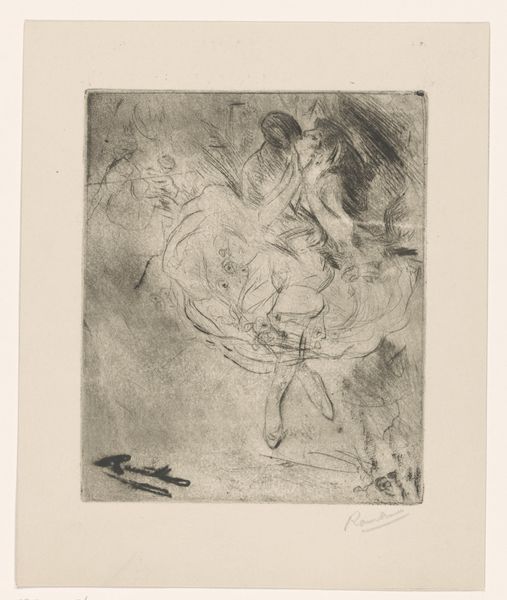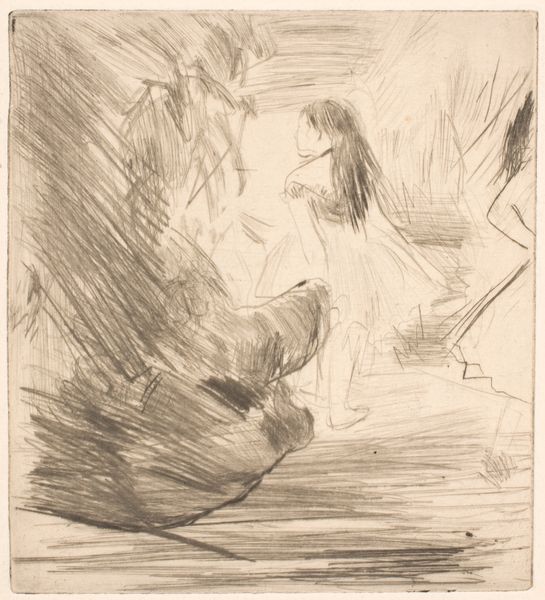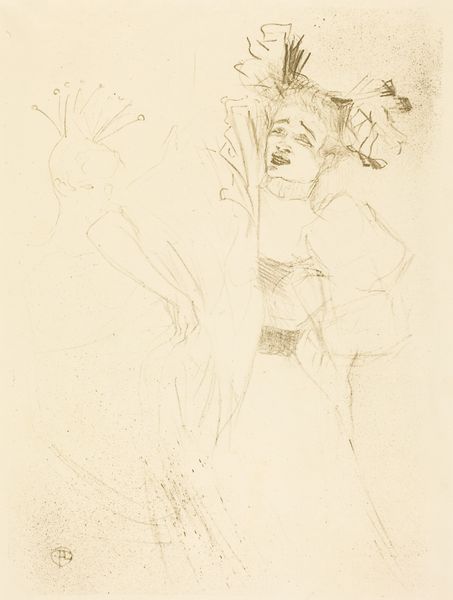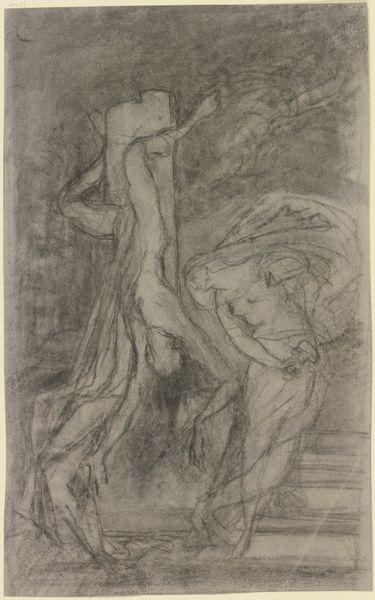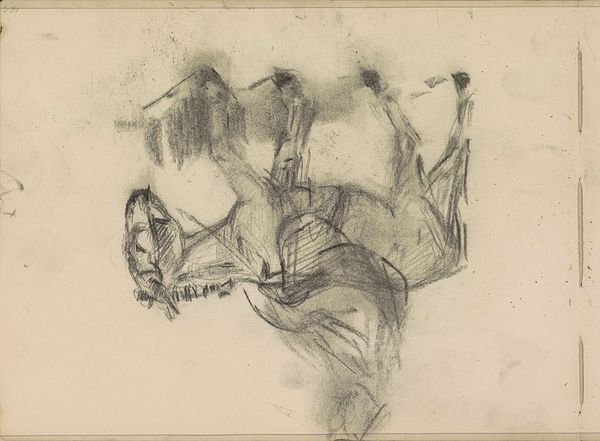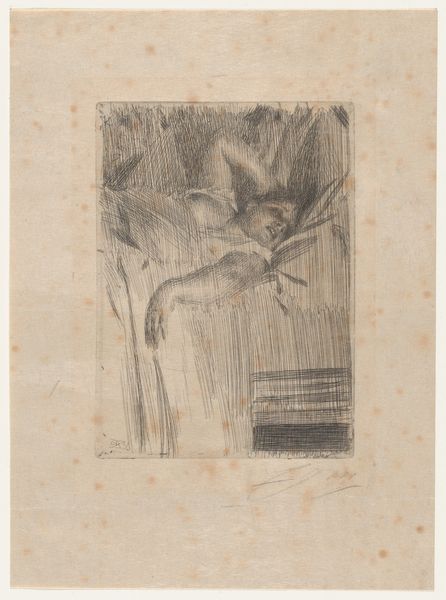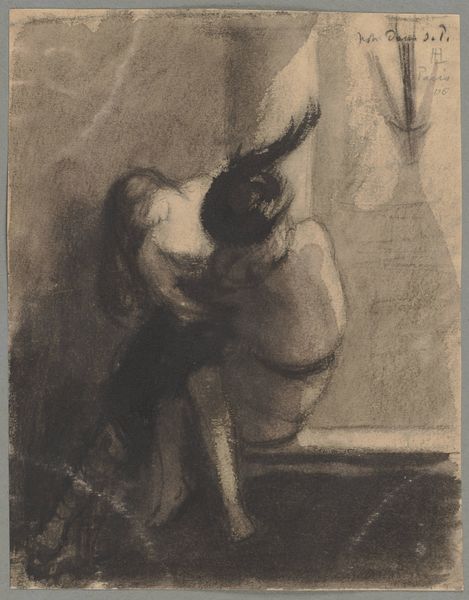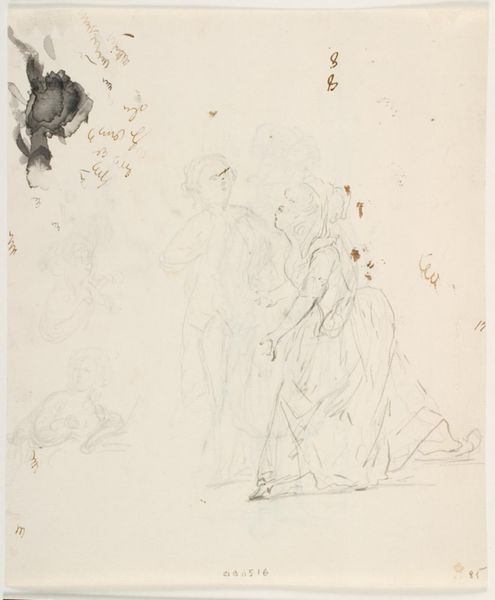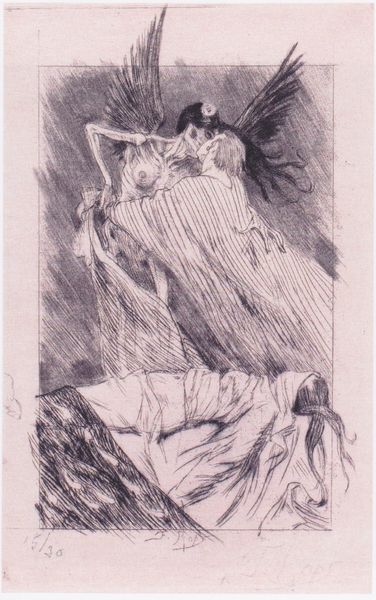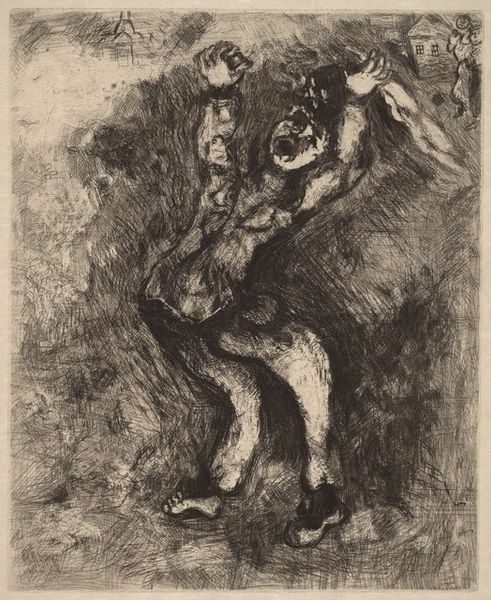
drawing, pencil, charcoal
#
portrait
#
drawing
#
pencil sketch
#
greek-and-roman-art
#
charcoal drawing
#
figuration
#
pencil drawing
#
pencil
#
charcoal
#
history-painting
#
academic-art
Copyright: Public domain
Editor: Here we have Nikolaos Gyzis’ "The Soul of the Artist," a charcoal and pencil drawing from 1897. It feels almost dreamlike, with soft lines and hazy figures. What jumps out to you? Curator: For me, the intrigue lies in the materiality itself. The smudged charcoal and visible pencil lines speak volumes. Gyzis wasn’t trying to create a flawless illusion, was he? Instead he's laid bare the process. It prompts a question: Who exactly had access to the raw materials for art creation, and what role did they play in shaping the final work? Editor: So you’re saying it's not just *what* is depicted, but also *how* it’s made? How the resources are mobilized? Curator: Precisely! Look at the figures: are they polished portraits for the bourgeoisie, or something else entirely? What did a sheet of drawing paper *mean* at that moment, when academic art was the cultural standard in Europe? Editor: Good point! Could this medium have been seen as challenging, even subversive, by leaning away from conventional oil painting of the time? Curator: Think about academic art at the time - tightly controlled by academies, often serving specific ideological purposes. How does the immediacy of charcoal, its relative cheapness and accessibility, contrast with those power structures? This isn’t a finished product, it is more like notes. Editor: The medium itself is a statement then, kind of rejecting the slick perfection that was expected. I hadn't thought of that! Curator: It hints at artistic creation that isn't filtered through the elite institutions. The act of drawing becomes democratized, almost. Something made accessible, not necessarily rarefied. Editor: Wow. I will definitely view sketches in a new light now. Thank you! Curator: It highlights the artist's decision-making at play; how raw materials, labor, and intent intersect to create meaning far beyond what’s depicted.
Comments
No comments
Be the first to comment and join the conversation on the ultimate creative platform.

